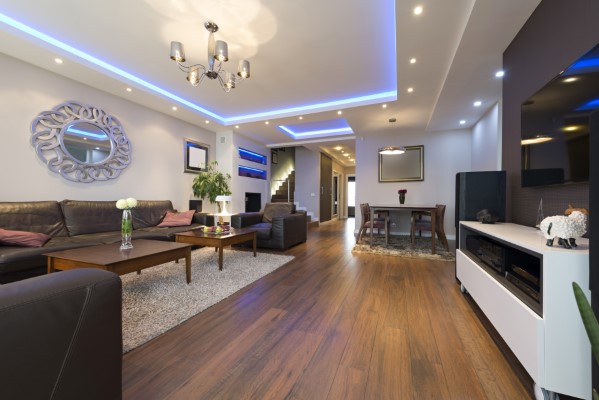One of the easiest ways to upgrade the look and function of your home is by rethinking your lighting. Good lighting can make all the difference, and it’s not just about the lighting fixtures themselves.
There’s a lot more to it, like how the light actually hits the areas you’re lighting, and how easy your lights are to control. Learn more about how to perfect the light setup in your home by reading the simple tips below.
How Can I Improve the Light in My Living Room?
One of the best ways to improve the lighting in your living room is by adding variety. If can lights currently light the entire room in the ceiling, it’s time to introduce some more diversity to your design. Some lighting experts say it’s important to include multiple different types of fixtures.
For example, you shouldn’t use all floor lamps or all wall-mounted sconces. Those kinds of approaches keep all the light at the same height, which makes for more of a boring look. Consider putting a small lamp up on a high shelf, or even adding a low light fixture to the floor.
How Do You Make Good Lighting at Home?
Just like it’s important to have a variety of different fixtures in your living room, it’s critical to use different lights throughout your whole home. Different colors and warmth levels from varied types of bulbs and fixtures give you some diversity.
Some researchers have suggested that different colors of light are even best for different areas. For example, cool blue light might boost alertness when you need to work, and low red lights are best for bedrooms and other places where you hang out at night.
How Many Lumens Do I Need per Square Foot?
There’s no hard and fast rule for this, but most experts suggest you need about 20 lumens per square foot of floor space. For raised surfaces like your dining room table, a slightly higher level of about 30 lumens per square foot may be more appropriate.
Raise that number to at least 50 lumens per square foot at your desk, kitchen counter, or anywhere else you need to complete work. This level of 50 lumens for task lighting should also be applied to areas like your favorite armchair, where you do a lot of reading.
How Much Light Do I Need in a Room?
If we stick with the basic principle of at least 20 lumens per square foot of floor space, that means at least 5,000 lumens in a 250 square foot room. You can use about five 100 watt incandescent bulbs or eight 10 watts LED light bulbs to achieve that.
Keep in mind that there are many different kinds of light bulbs, so you may have to try a few options. Once you’ve established a good base of floor lighting, you can add lights for surfaces and work areas.
How Can I Get Better Control of My Lights?
The placement of light switches used to be a big deal in lighting designs. Now, the best bet is to ditch the switch altogether and transition your home to a smart lighting scheme. There’s no need to worry about hunting for the correct light switch when you can talk to your home assistant or control lights from your phone.
Smart Lighting in San Francisco at Performance Audio
Here at Performance Audio, we’ve been helping the Bay Area improve their home lighting for over 40 years. Contact us today to learn more about your smart home lighting options.
Image Credit: Shutterstock/foamfoto





